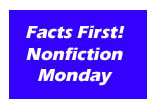Like its
title suggests, this fun story cleverly uses the beloved “Old MacDonald” song
as inspiration. The narrative follows a young girl’s
exploration of a pond on her family farm. She carries with her a notebook where she
draws the plants and creatures she finds. The soft, watercolor illustrations are contrasted with a white background,
keeping it simple and focused on the pond itself. There is a great use of onomatopoeia. For instance, the reeds go “swish, swish,” the
deer “flick, flick” (as it drinks), and the dragonflies “whir, whir.” As the exploration ends, Jo runs to playfully
share her drawings with “Old MacDonald.” The closing pages reveal her drawings as wells as facts about ponds, additional resources on them, and ways to be a young naturalist. Jo MacDonald Saw a Pond is
ideal for ages 3-8.
On summer
morning, Buddy and Mamma decide to go on a pond walk. Buddy wants to see a turtle more than
anything! As he investigates, his mamma
helps him identify insects and animals.
They discuss what they know about them and tell silly jokes. Buddy
draws a picture of each creature and plant he sees like whirling beetles, a frog,
cattail plants, dragonflies, a lily pad, and a salamander. The duo share a picnic lunch
at the pond before heading home. They
finally spot a turtle but in an unexpected way! The illustrations are typical of Wallace’s
style—simple shapes using paper collage, photographs, and colored pencils. Instructions at the end demonstrate how you
can make a rock turtle with your little ones.
Pond Walk is a fun book for ages 3-8.
This narrative is hosted by none other than the Cat in the Hat who teaches his
child companions all about pond life. Though it is written in free verse poetic form with simple vocabulary
and sight words, it delves into things big and small at the pond. He begins by introducing microscopic organism
like spirulina and amoeba. Readers get a look at what can be seen in a
microscope. Next, he shows the snails,
worms, and leeches on the pond’s floor.
Thing 1 and Thing 2 stop by to help out with the difference between a
complete and an incomplete metamorphosis. Much more is revealed about the
fish, insects, and other animals that make up this habitat. The narrative ends with one of the Cat’s
unusual antics. I recommend Would
You Rather Be a Pollywog for ages 5-9. Early Reader,
This selection
begins with a spy-hole view of a small part of something in the pond
surroundings. The text asks, “Look very
closely. What do you see?” Several
suggestions are made as possibilities.
Children can pick one of them or make their own guesses. Turning the page reveals the animal or plant
in full. Two short paragraphs are
written about each one. For animals,
their habits, such as eating, nesting, and protecting themselves, is disclosed. For
plants, their role in the pond habitat is explained. This
same pattern is repeated for each one like the box turtle, shubunkin, mallard
duck, dragonfly, water lily, cattail, and tiger salamander. The final page reveals a sweeping view of the
pond at dusk. The photograph
illustrations are vivid and striking. Looking
Closely Around the Pond is recommended for ages 5 and up.
This
brilliant book is oozing with stunning photographs of plant and animal
life. There are so many amazing
close-up shots from everything from algae and microscopic volvox to killer
grubs and water boatman. The fascinating
text delves into the lives of the northern water snake, the great blue heron,
the fearsome mink, and the red-spotted newt.
Creepy crawlers also abound like snails, mosquitoes, grubs, and
leeches. A snapshot of some of the most
interesting information is given on each one.
Life in a Pond is a visual delight that ages 7 and up will
love!
This post is
linked up with Science Sunday at Adventures of Mommydom and NonFiction Monday at Apple with Many Seeds.

.jpg)
.jpg)
.jpg)







What a wonderful list of Pond Books. Of course what caught my eye was the Dr Seuss one. I thought I knew all of Dr. Seuss books but this one I am unfamiliar with. How nice that you have shared this. Thanks!
ReplyDeleteWhat a great roundup! We love onomatopoeia, they reflect my children's majority language very well. Thanks for introducing these!
ReplyDeleteThanks for contributing such a great list to this week's Nonfiction Monday event.
ReplyDeleteTammy
I love the Cat in the Hat science books that have been coming out recently. They're a lot of fun.
ReplyDelete